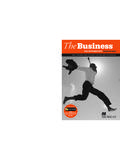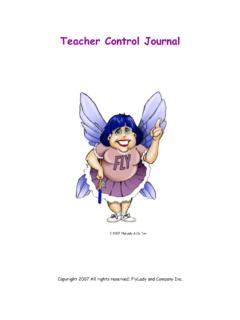Transcription of The National Literacy Strategy - Sassoon® font
1 The National LiteracyStrategyDeveloping Early WritingDepartment for Education and EmploymentSanctuary BuildingsGreat Smith StreetLondon SW1P 3BT Crown copyright 2001 Extracts from this document may be reproduced for non-commercial educational or trainingpurposes on condition that the source is acknowledgedISBN 019 312 400 9 AcknowledgementWith thanks to the children, parents and staff of the following schools for the photographs used in this book :Briset Primary School, London;Conway Primary School, London;Gallions Mount Primary School, London;St Columb Major Community Primary School, 1 Introduction and rationale7 Part 2: The teaching unitsFoundation Stage: Reception year24 Year 151 Year 285 Part 31 Summary of organisation and language features: fiction and poetry1522 Summary of organisation and language features: non-fiction1543 Developing handwriting 1564 Developing spelling166 Contents35 Part 1 Introduction and rationaleThis book and CD-ROM contain materials to help teachers and practitioners teach writing in theReception year of the Foundation Stage and through Key Stage 1.
2 They emphasise the importanceof shared writing and teaching from the objectives in the National Literacy Strategy Framework forteachingand the QCA early learning goals. Parts 1 and 3 of the book address generic issues on theteaching of writing with young children; Part 2 addresses each year group Foundation Stage:Reception, Year 1 and Year 2 from the evaluation of the early implementation of the National Literacy Strategy showsthat, in most classrooms, while both reading and writing have been emphasised, the teaching ofreading, particularly shared reading, has been more systematic and better structured. It is mostlikely that this has been a major factor in the substantial rise in reading scores between 1998 and2000. Yet in writing, despite frequent opportunities, repeated encouragement and sensitive supportfrom teachers, many children still find it difficult and make very slow progress.
3 Although learning towrite is intrinsically the greater challenge, there is much that teachers can do to improve children successful writing classroom should include: clear expectations, targets and regular observation and assessment of progress towards thetargets; a stimulating writing environment with: displayed and celebrated examples of children s own writing; purposes and opportunities for writing linked to activities across the curriculum; frequent uses of writing to communicate, eg through notes, reminders, lists, etc.; frequent access to and encouragement to use writing materials at every opportunity; opportunities to use writing in play activities; adults (not only teachers) as role models who use writing explicitly in the classroom or settingfor a variety of purposes and demonstrate to children what they are doing, eg writing notes,completing registers, making lists, completing forms, writing labels, directions, captions,responding to children s work; a wide experience of reading as the primary source of knowledge about how written languagelooks and sounds; the systematic, regular and direct teaching of phonics; the direct teaching of handwriting with daily opportunity for practice.
4 Rich oral experience of telling, retelling and refining texts as a preparation for writing; regular shared writing to teach the skills of text composition directly; opportunities for supported, independent writing linked to, and developed from, shared writing; displays of word lists, notes and other formats for planning which represent work in progress and serve both to remind children of previous learning and to provide scaffolds, checklists andsupport for independent speaking to writingWhen children begin to write, they tend to write as they speak. Spoken language, however, isdifferent from written language in a number of ways. These differences are related to thepermanence of the written word, the need to be concise and explicit and the fact that the readeris often separated from the writer in time and space.
5 Speakers can rely on context, intonation,7 Introduction and rationalefacial expression, pauses, etc. to convey meaning and create effect. Writers often use moreexplicit grammatical structures, as well as other organisational features such as punctuation,paragraphs, headings, illustrations and diagrams to communicate ideas. The following two textsfrom a seven-year-old illustrate some of the differences:AToday we learnt about taste and Miss Ward put some things out on the table and we had totaste them and what we had to do is they all had numbers by them and we had to tastethem and it had a different taste to them and we had to taste them and see if it was sweet,salt, and bitter and sour and I did not taste any experimentWe had to taste foods which had different numbers to see if they tasted sweet, salt, bitter orsour.
6 I thought the best taste was cheese and the worst was pickle. I did not find these two examples, the intentions are similar to explain the experiment. Text A recounts theevents but backtracks and repeats. When written down, these repetitions stand out but whenspoken, they make sense. The speaker joins all the thoughts together with and and uses intonation, gesture and stress to keep the listener on track. Text B is more clearly a writtenrecount. It contains far fewer clauses than A and joins them in more complex ways, that is bysubordination rather than the continuous use of the conjunction and . The effect is a morefocused and free-standing account which can be read by any growth of competence in writing also contributes importantly to the broader development ofchildren s thinking.
7 The more context-free and explicit nature of writing helps children becomeincreasingly reflective about language. By structuring and restructuring ideas in writing, childrenextend their powers of imagination, learn to express increasingly complex, abstract and logicalrelationships, and develop the skills of reasoning and critical evaluation. This, in turn, feeds backinto their powers of oral key features of writing are particularly important because they mark the differencesbetween the grammar of spoken and written English:8 Introduction and rationaleTEXT cohesionThroughout the primary years children should learn how to link sentences: in Reception year and at Key Stage 1, they should be able to create a coherent sequence ofideas; through Key Stage 2, they should learn to select from a wide range of connecting words andphrases, and to use verbs and pronouns consistently to create cohesive chronological andnon-chronological texts to suit a variety of audiences and construction and punctuation in Reception year and at Key Stage 1, the representation of ideas in sentences is a characteristicof written text which children need to be made aware of through reading and eventually learn tocontrol in writing.
8 Written sentences are differently structured from spoken utterances whichcan rely on gesture, intonation and stress to fill out the speaker s meaning; at Key Stage 2, the ability to link ideas within sentences by combining and sequencing clausesenables children to structure and connect ideas in a wide variety of ways, which create interestfor readers and make children s writing more precise, varied, surprising and fit for choice and modification beginning in Reception year and through Key Stage 1, children should draw from their readingan increasingly rich vocabulary, and learn to select words and phrases that add colour andprecision to their writing, refine its meaning and are appropriate to its audience and purpose; through Key Stage 2, children should learn how to enhance their meaning through the choice ofwords and through modifying nouns and verbs to add focus, variety and interest for the children pick up these features easily, but for many the nature of written text needs to becarefully taught.
9 This learning comes in at least three important ways: firstly, through theexperience of reading, which is the primary source of knowledge about the written word andhow it sounds ; secondly, through oral telling and retelling of stories, explaining, instructing,recounting, etc. where they are helped to say it like the book and, thirdly, through shared writingwhere the teacher focuses attention explicitly on writing text, demonstrating how to structure,punctuate and join sentences, choose appropriate vocabulary, and make meaning precise their reading, children begin to recognise important characteristics of a variety of writtentexts, often linked to style and voice. They will recognise and be able to use typical storyopenings:Once there was ..,In a little town by the edge of.
10 ; ways of presentingdialogue:he replied ..,said the little old man .. They become familiar with the way thatinstructions are written:First, mix in the water .., and information is presented,This is myraincoat. It keeps me dry .. They need to build experience and a repertoire of these writtenfeatures and experiment with them in their own to write: the growth of controlA successful piece of writing is the product of these key compositional features and thetranscriptional skills of spelling and handwriting. For a child of 5 or 6, it is a major teachers and practitioners in Reception settings and Key Stage 1 classrooms are laying thebuilding blocks for each of these elements of writing. Consider the following example:9 Introduction and rationaleBen is nearly 6.




